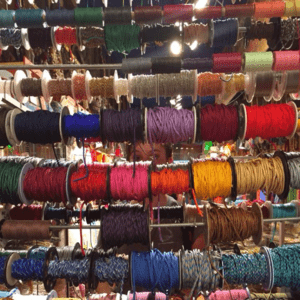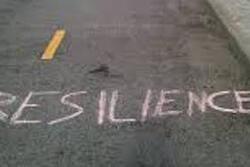Coloring in Between the Lines
When I was in 6th grade, I hit a boy in my class over the head with my lunchbox because he called my best friend gay and said that my jacket made me look gay too. I knew that he wasn’t using “gay” as a nice thing, and I was infuriated on my friend’s behalf. I remember that jacket, too-- it was brown houndstooth with elbow patches, and I wore it with jeans and Ugg boots on a regular basis for much of that year, even after the lunchbox-bashing incident.
At age fifteen-- four years after the lunchbox altercation-- regular elements of my style included oxford shirts and Dr Martens combat boots. For much of sophomore year, I wore my hair in a style that looked like a pixie cut on a good day and a post-breakup whim on a bad day. This-- short hair, combat boots, white shirt-- is what I was wearing on an autumn day last year, when, in response to a comment about my sexuality, a family member matter-of-factly notified me that I had “been cutting a very lesbian figure.”
In contrast with my reaction to the similar assertion from four years earlier, there were no flying lunch pails. I actually didn’t do much at all in response, at least in that moment. But I don’t think it was a coincidence that I decided to grow out my hair that month, or that I bought new skinny jeans soon afterwards. This winter was the first in three years that I’ve worn other shoes besides my Docs, and I can’t tell you the number of times that I took an oxford shirt out of my closet, only to put it back. I sure didn’t hit anyone over the head with a lunchbox, literally or metaphorically, for implying that my appearance dictated who I was. Instead, I changed to avoid the assumptions that people made about me based on the way I looked. If our world were inclusive of different gender/sexuality expressions besides the norm of female-feminine, male-masculine, I don’t think it would seem like I’m “contradicting myself” when I, who have short hair, date a guy.
Because I cut my hair and dressed as I did, many people automatically perceived me as queer-- which isn’t a completely incorrect assumption, so I’m not entirely sure why it bothered me so much. Perhaps I am fearful of “advertising” my sexuality via my looks because people come to immediate conclusions about something that’s deeply personal, something that is no one’s business but my own. And yeah, in hindsight, I should have expected that. I should have anticipated curiosity about my personal life because even in our post-Obergefell world, challenging traditional notions of gender appearance and relationships still puts someone in an extraordinarily vulnerable position. I now know that that position is one of tacit but intense scrutiny, and it’s exhausting. People love to figure out things about others, and not knowing something as basic as the sexuality of a new acquaintance seems to make them crazy. But since that’s not something most people discuss in polite conversation, they’re left to speculate and whisper. I have to call out the double standard at this point-- does anyone really talk behind someone’s back about what gender they’re attracted to if they look “traditionally feminine?” Sure, high schoolers love to gossip about who likes who, but if our society was as accepting as the mainstream media often makes it out to be, determining what gender someone dated wouldn’t be such a common goal.
If we were really living in a “post-feminist” era, I don’t think that I would feel like the way I look warranted unwanted speculation about my sexuality. If this were a feminist world-- one that is inclusive to all women-- I don’t think that it would take so much courage for me to hit someone with a (figurative) lunchbox about the fact that the way I look does not necessarily inform everything about me.
This piece was written as part of JWA’s Rising Voices Fellowship.







